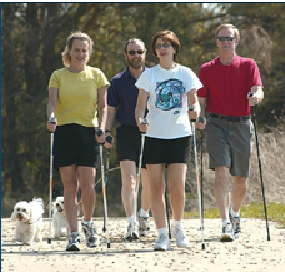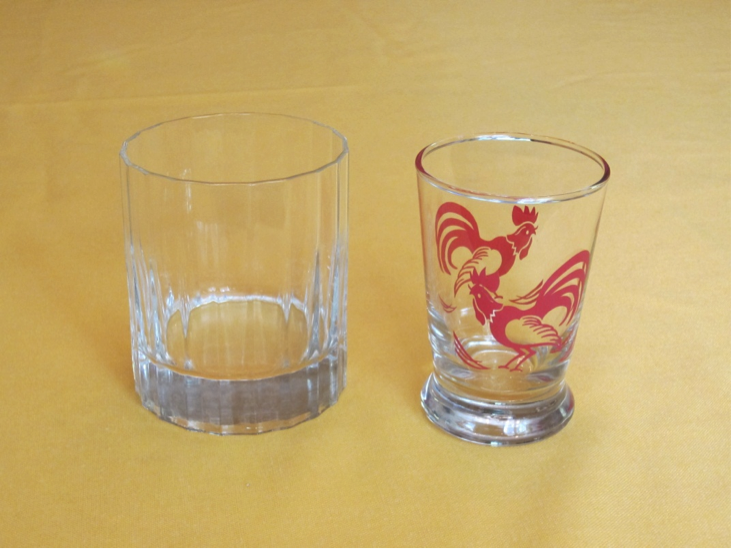We had our Falls Church support group meeting at Little River Glen Senior Center March 14, 2013. Our speaker was Jordan Tucker, DPT, Fair Oaks Hospital, Outpatient Clinic. Below are notes and handouts from that presentation.
Balance is often a problem for people with ET. Decreased strength and flexibility, which often come with ET, can adversely affect balance. Flexibility is important because the ability to stretch one’s leg, calf, and chest muscles affects balance. Similarly, lack of strength to easily get out a chair can result in falls. Scoliosis and gait issues may make the body lean in one direction, throwing you off balance. ET sufferers also have more trouble dual tasking, i.e., walking and talking or walking in one direction and looking in another. Ankle instability, high or low arches, knee or gait issues, weak ankles, and hip problems also affect balance. Physical therapists work with patients to deal with all these problems.
Physical therapists experienced in working on balance with patients who have neurological issues tend to be found in hospitals. Call your local hospital to see if they offer it. Be aware that, if you are on Medicare, there is an $1800 cap on PT. However, there are exceptions to this limit, such as a change in your diagnosis or treating multiple problems.
Physical therapy involves an initial evaluation followed by a plan for exercises done with the therapist and a plan for exercises to do at home. The course of treatment will take place twice a week for two weeks or longer. It typically involves stretching, strengthening specific muscles as needed, and balance exercises. You can get a prescription for physical therapy from any doctor – your primary care physician as well as a neurologist. Just ask.
Physical therapy can retrain the three systems that have to do with balance:
- Eyes and vision – cataracts can be a problem affecting balance
- Feet – neuropathy (pain and tingling in extremities) interferes with the feedback from your feet that helps maintain balance
- Brain – reaction times
Tai chi, yoga, Pilates, and water therapy are also useful in improving balance. Jordan Tucker suggested joining a community exercise group. She also said that people with ET and balance problems may benefit from using a cane, a walker, or walking sticks.
An audience member said that he uses walking poles successfully. They are available in sporting goods stores, but the poles in sporting goods stores tend to have narrower rubber tips than the ones sold online for balance. He found information about poles at http://polesformobility.com/ and https://www.exerstrider.com/product-category/poles/. The poles are pictured below (but picturing smaller tips than those used by the audience member).
 The audience member said he wears a backpack to carry things since his hands are engaged with two balance poles.
The audience member said he wears a backpack to carry things since his hands are engaged with two balance poles.
Jordan Tucker handed out a questionnaire on balance confidence and a home safety checklist with tips on using stairs, railings, grab bars, and avoiding reaching for far-away objects (which we may do in the kitchen). Some obvious points are often overlooked, such as the need for good lighting in the home, especially near stairs. Night lights in the bathroom can be useful, too.
Her presentation and two handouts that she passed out are listed here (pdf format):
How a Physical Therapist Can Help Increase Your Balance
Home Fall Prevention Checklist
The Activities-specific Balance Confidence (ABC) Scale*
Joyce Letzler, Support Group Member


 In the early 1990s, a number of companies started to offer software that was designed to convert spoken words into text that could then be displayed or printed. Among the early commercial offerings was a program entitled “Dragon Naturally Speaking”. In 1994, I tried an early version of Dragon in my workplace. After installing a microphone to my computer, I spoke several sentences rather slowly, and watched words appear on the computer monitor. Unfortunately, there were quite a few errors in the written text, and I chose to stick with keyboard entry.
In the early 1990s, a number of companies started to offer software that was designed to convert spoken words into text that could then be displayed or printed. Among the early commercial offerings was a program entitled “Dragon Naturally Speaking”. In 1994, I tried an early version of Dragon in my workplace. After installing a microphone to my computer, I spoke several sentences rather slowly, and watched words appear on the computer monitor. Unfortunately, there were quite a few errors in the written text, and I chose to stick with keyboard entry.


